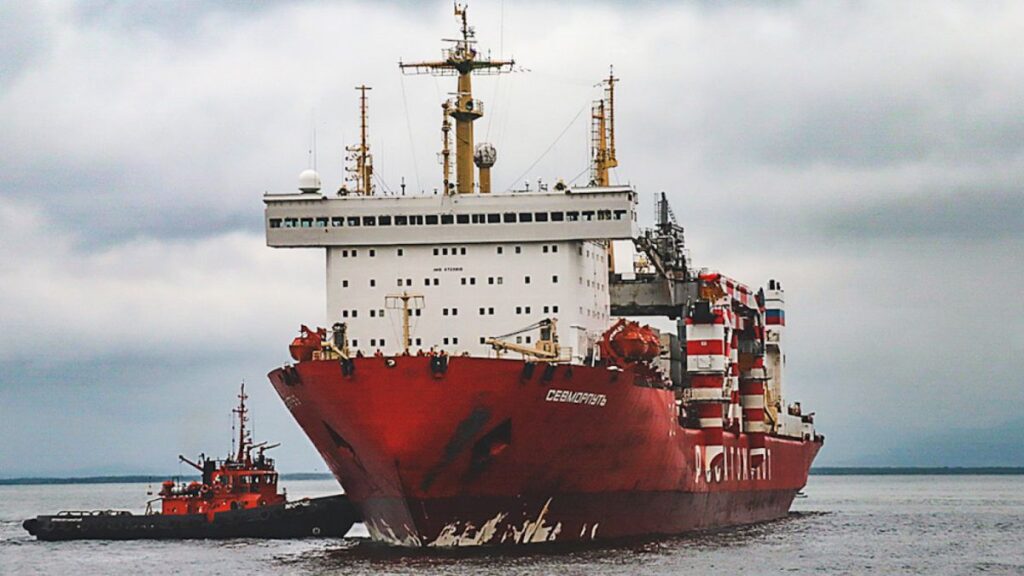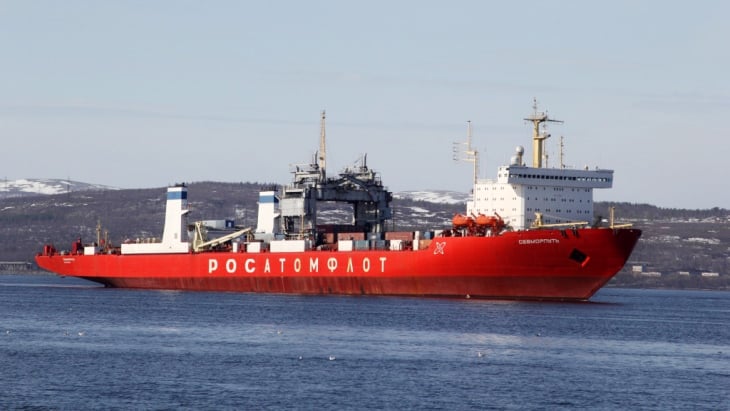A group from the Defense Research and Development Organization (DRDO) also looked at the shipment and said it was okay for the neighboring country (Ship from China to Pakistan) to use for their nuclear program.
Indian security forces stopped a ship from China that was going to Karachi at Mumbai’s Nhava Sheva port on Saturday because they thought it might have dual-use cargo that could be used for Pakistan’s nuclear.

Following information from sources, customs officials stopped the Malta-flagged commercial ship CMA CGM Attila at the port on its way to Karachi on January 23 and inspected the cargo, which included a Computer Numerical Control (CNC) machine made by an Italian company.
Ship from China to Pakistan:
A group from the Defense Research and Development Organization (DRDO) also looked at the shipment and said it was okay for the neighboring country to use for their nuclear program.
Since 1996, CNC machines have been part of the Wassenaar Arrangement. India is one of 42 member countries that share information about the movement of conventional weapons, goods and technologies with more than one use, and people who own these things.
The CNC machine was used by North Korea to make nuclear weapons.
With specific information, the port officials told the Indian defense authorities about the heavy cargo. The Indian defense authorities inspected it and reported their concerns. The shipment was then seized, according to the officials, who also said that the seizure was done to stop Pakistan and China from possibly spreading the technology.
This isn’t the first time that Indian port officials have stopped high-grade military goods from going from China to Pakistan as these.
Pakistani defense supplier Cosmos Engineering has been on a watchlist since March 12, 2022, when Indian officials stopped a shipment of thermoelectric instruments made in Italy at the Nhava Sheva port.

Concerns about China’s support for Pakistan’s nuclear and missile programs have grown.
The investigation is still going on to find out if the groups thought to be from Pakistan that are getting these dual-use items are giving them to the Defence Science and Technology Organization (DESTO), which is in charge of a lot of Pakistan’s defense research and development.
China sent an autoclave to Pakistan in February 2020 under the name of a “industrial dryer.”
The ship had sailed from Jiangyin port on the Yangtze River in Jiangsu province, China, to Port Qasim in Pakistan.
Ship from China to Pakistan: Navigating Trade Routes and Economic Partnerships
The connection between China and Pakistan, both geographically and economically, has grown significantly in recent years. As two neighboring countries with complementary strengths and strategic interests, their partnership extends beyond political and diplomatic ties to robust trade relations. Shipping goods from China to Pakistan has become a vital component of this relationship, facilitating the flow of commodities, raw materials, and finished products between the two nations. In this comprehensive exploration, we delve into the dynamics of shipping from China to Pakistan, examining the trade routes, logistical challenges, and the broader implications for bilateral trade and economic cooperation.
Geographical Context:
China and Pakistan share a border spanning approximately 523 kilometers in the Karakoram mountain range, making them contiguous neighbors. Despite the rugged terrain, the two countries have forged strong economic ties, leveraging their geographical proximity to enhance trade and connectivity. The port city of Karachi in Pakistan serves as a crucial gateway for maritime trade, while China’s extensive network of ports, including Shanghai, Shenzhen, and Ningbo, facilitates the movement of goods across the seas.
Trade Routes and Logistics:
Shipping from China to Pakistan involves traversing several maritime routes and logistical pathways. The most common route is through the Arabian Sea, with cargo vessels departing from Chinese ports and navigating southward through the Strait of Malacca or the South China Sea before reaching the Arabian Sea. From there, ships head towards Pakistani ports such as Karachi, Port Qasim, and Gwadar, depending on the specific destination and requirements of the consignment.
Another emerging route gaining traction is the China-Pakistan Economic Corridor (CPEC), a flagship project under China’s Belt and Road Initiative (BRI). The CPEC aims to connect the western regions of China with the Arabian Sea port of Gwadar in Pakistan through a network of highways, railways, and pipelines. Once fully operational, the CPEC will significantly reduce transportation costs and transit times for goods moving between China and Pakistan, further enhancing bilateral trade and economic integration.
Challenges and Solutions:
Despite the opportunities presented by shipping from China to Pakistan, several challenges persist, primarily related to logistical inefficiencies, infrastructure limitations, and regulatory hurdles. Delays at ports, bureaucratic red tape, and inadequate transportation infrastructure can impede the smooth flow of goods and increase costs for traders and businesses.
However, both China and Pakistan have undertaken initiatives to address these challenges and improve the efficiency of cross-border trade.
Economic Implications:
The shipping route from China to Pakistan plays a pivotal role in driving bilateral trade and economic cooperation between the two nations. Pakistan serves as an important market for Chinese goods, ranging from electronics and machinery to textiles and construction materials. Conversely, China is a significant source of imports for Pakistan, supplying vital commodities such as machinery, chemicals, and consumer goods.
The deepening economic ties between China and Pakistan have broader implications for regional stability and prosperity. The CPEC, in particular, has the potential to transform Pakistan’s economy by fostering industrialization, infrastructure development, and job creation. Additionally, enhanced trade relations contribute to mutual prosperity, diplomatic goodwill, and strategic alignment between the two countries.
Conclusion:
Shipping from China to Pakistan is not merely a logistical endeavor but a manifestation of the deepening economic partnership between the two nations. As trade volumes continue to grow and infrastructure connectivity improves, the shipping route will play an increasingly crucial role in facilitating the exchange of goods, fostering economic development, and strengthening bilateral ties.

Bimal Mardi is a Professional Content Writer. He works in First Santal Broadcast Network TV/ News channel in India. Bimal Mardi writes about Technology, Education and Tech Product Reviews



